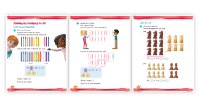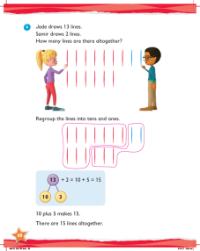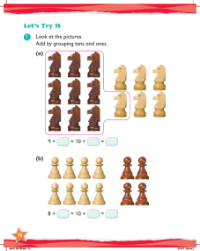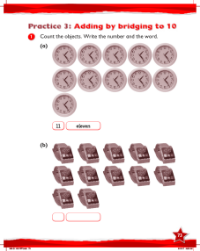Max Maths, Year 1, Learn together, Adding by bridging to 10
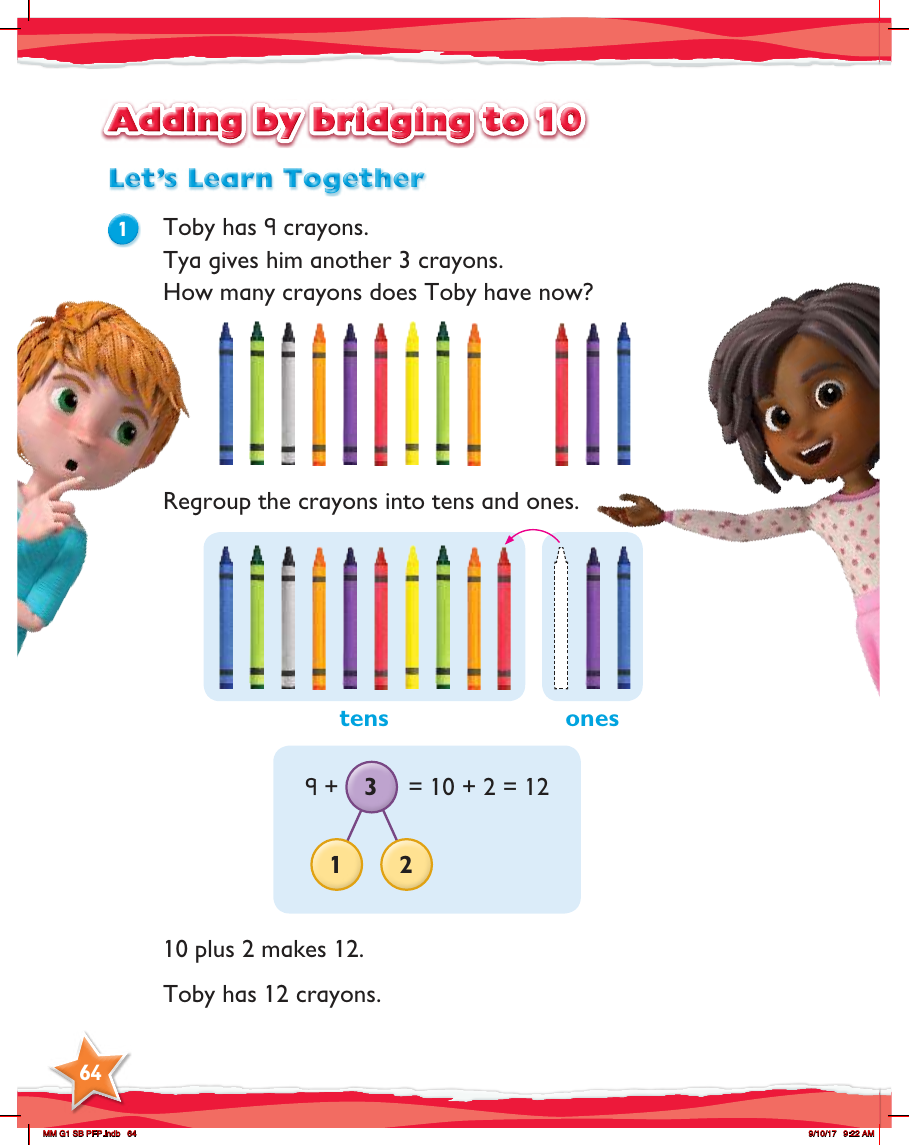
Maths Resource Description
The concept of 'Adding by bridging to 10' is an essential mathematical skill introduced in Max Maths for Year 1 students. This technique helps young learners to simplify addition by breaking down numbers into tens and ones. For instance, when Toby starts with 9 crayons and receives 3 more from Tya, rather than adding 9 and 3 directly, the sum is restructured. By regrouping, 1 crayon is taken from the 3 to make a full 10 with the 9 crayons Toby already has. This leaves 2 crayons ungrouped. The calculation then becomes a simpler 10 plus 2, giving Toby a total of 12 crayons. This method makes it easier for children to understand and perform addition by capitalising on the base-10 number system.
Another example involves Han and Tya finding seashells on the beach. Han finds 8 seashells, while Tya finds 5. To calculate the total number of seashells found, the numbers are again regrouped into tens and ones. From Tya's 5 seashells, 2 are used to bring Han's 8 up to a full 10, leaving 3 seashells. The sum is then simplified to 10 plus 3, equaling 13 seashells in total. Additionally, students learn to form number bonds with beads, discovering that different groupings, such as 6 plus 6 and 10 plus 2, result in the same total of 12. This reinforces the concept of regrouping and demonstrates its effectiveness in different scenarios, helping to build a strong foundation in addition for young learners.
